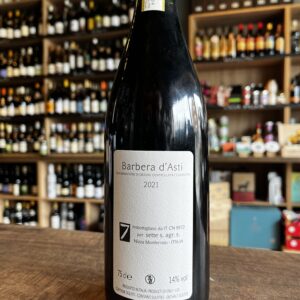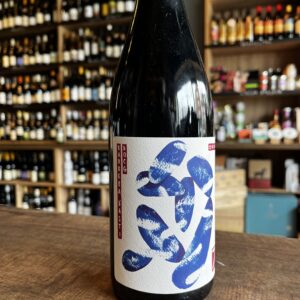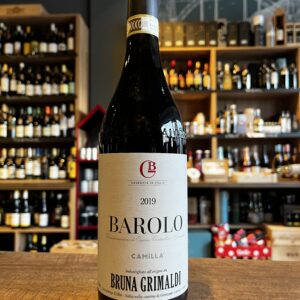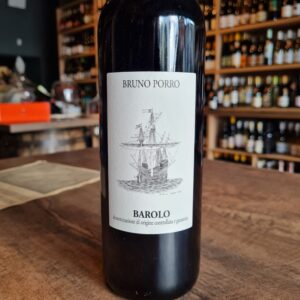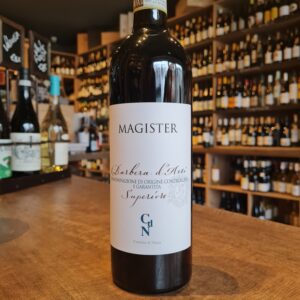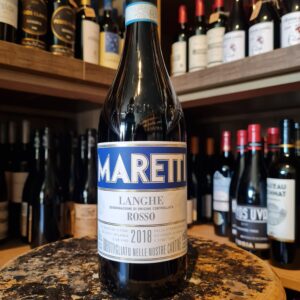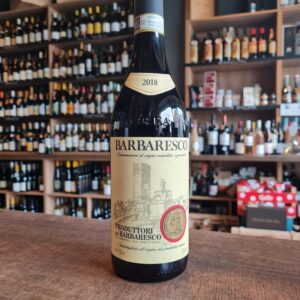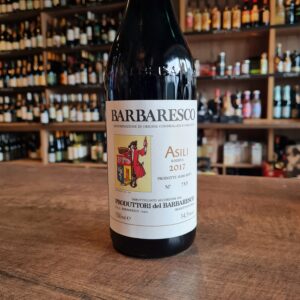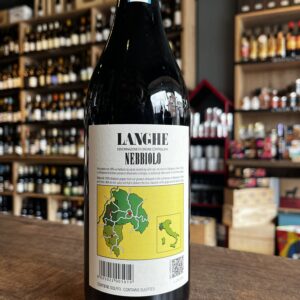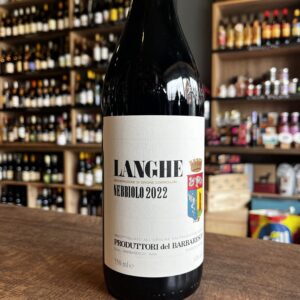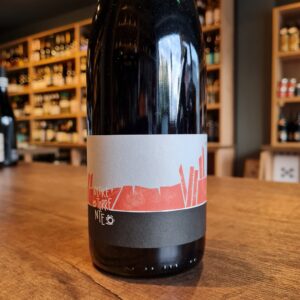Piedmont – Italy
-
Out of stock
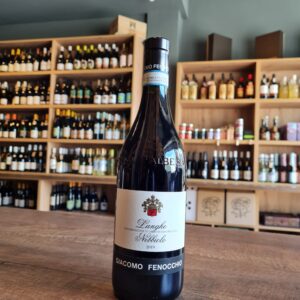 Since 1864, five generations of the Fenocchio family have been producing wine in the heart of Barolo - most of them born in the same yellow house in Monforte d’Alba, at the top of a hillside covered in Nebbiolo grapes. Claudio Fenocchio took upon his father teachings and instead of modernazing the Barolo winemaking techniques, he and with the support of his brothers decided to keep the tradition and build on it. Fenocchio has not taken up organic or biodynamic farming methods but, on the other hand, the estate never took to chemical fertilisers or herbicides, so diverse ground cover and natural predators protect the vines, which grow at their own pace. And in the winery, fermentation is similarly driven by nature and the local microflora. Technically, Claudio has found a way of producing wines which have approachable fruit when young, yet built around a strong tannic structure which does not overwhelm early on, but encourages the development of the wine over years. It is partly due to some green harvesting and careful selection, partly due to enzymatic reaction (ironically) during the long fermentation, which melds the fruit and tannin seamlessly. Barolos are aged for five months in stainless Slovenian oak and a further year in the bottle before release. steel, two years in Slovenian oak and a further year in the bottle before release. More than defining itself as traditional or modern Barolo, Giacomo Fenocchio wine is an expression of terroir.
Since 1864, five generations of the Fenocchio family have been producing wine in the heart of Barolo - most of them born in the same yellow house in Monforte d’Alba, at the top of a hillside covered in Nebbiolo grapes. Claudio Fenocchio took upon his father teachings and instead of modernazing the Barolo winemaking techniques, he and with the support of his brothers decided to keep the tradition and build on it. Fenocchio has not taken up organic or biodynamic farming methods but, on the other hand, the estate never took to chemical fertilisers or herbicides, so diverse ground cover and natural predators protect the vines, which grow at their own pace. And in the winery, fermentation is similarly driven by nature and the local microflora. Technically, Claudio has found a way of producing wines which have approachable fruit when young, yet built around a strong tannic structure which does not overwhelm early on, but encourages the development of the wine over years. It is partly due to some green harvesting and careful selection, partly due to enzymatic reaction (ironically) during the long fermentation, which melds the fruit and tannin seamlessly. Barolos are aged for five months in stainless Slovenian oak and a further year in the bottle before release. steel, two years in Slovenian oak and a further year in the bottle before release. More than defining itself as traditional or modern Barolo, Giacomo Fenocchio wine is an expression of terroir. -
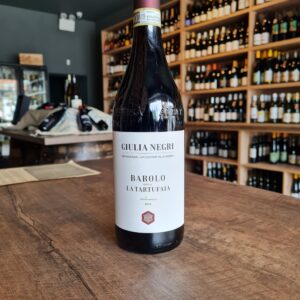 Giulia Negri is a young talent that goes by the nickname "Barolo girl" in the wine world. The grapes for this archetype of a modern-traditional Barolo come from the top vineyards Brunate and Serradenari, the latter is located at an altitude of up to 520 m, and the soils are clayey-sandy. It is an area with a particularly cool and breezy microclimate, which is reflected in the elegant profile of the wines. Climbing towards the top of the hill, the soils become increasingly rich in sandy veins and limestone marl, which contribute to giving Barolo an extreme expressive refinement. The high quality grapes, a work in the cellar that is very respectful of the raw material and aimed at enhancing the typical characteristics of the terroir, allow the creation of a Barolo faithful to the land of origin. Dressed to impress, savory red with a fine fragrance on the palate that doesn't deny its origin and the grape variety, it is of an almost unique elegance and freshness that allows it to be identified as a lively and completely complete top wine even when young. Further years of maturity are certainly not a mistake, because one feels impressively how the complexity increasing with the age joins the finesse and elegance already unmistakable today. One bottle for now and don't put the rest too far away in the cellar, please!
Giulia Negri is a young talent that goes by the nickname "Barolo girl" in the wine world. The grapes for this archetype of a modern-traditional Barolo come from the top vineyards Brunate and Serradenari, the latter is located at an altitude of up to 520 m, and the soils are clayey-sandy. It is an area with a particularly cool and breezy microclimate, which is reflected in the elegant profile of the wines. Climbing towards the top of the hill, the soils become increasingly rich in sandy veins and limestone marl, which contribute to giving Barolo an extreme expressive refinement. The high quality grapes, a work in the cellar that is very respectful of the raw material and aimed at enhancing the typical characteristics of the terroir, allow the creation of a Barolo faithful to the land of origin. Dressed to impress, savory red with a fine fragrance on the palate that doesn't deny its origin and the grape variety, it is of an almost unique elegance and freshness that allows it to be identified as a lively and completely complete top wine even when young. Further years of maturity are certainly not a mistake, because one feels impressively how the complexity increasing with the age joins the finesse and elegance already unmistakable today. One bottle for now and don't put the rest too far away in the cellar, please! -
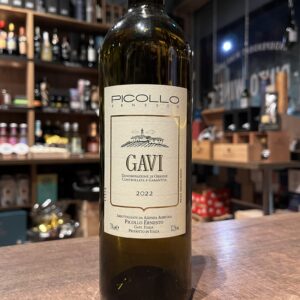 Picollo Gavi Ernesto is perched among the rolling hills that surround the town of Gavi. The climate here is much more mediterranean than in the north, benefiting from the constant maritime breezes, unique to the southern Piedmont. Picollo Ernesto’s vineyards sit near 260 meters above sea level in Rovereto di Gavi, one of the most prestigious area of the appellation. Our 16 hectares of vineyards are planted exclusively with Cortese, a hearty, high acid white varietal, perfectly suited for this area in northern Italy. Cortese thrives in difficult soil, dry climate, and full sun exposure, which Rovereto amply provides. Picollo’s vineyards are predominantly south-facing and the soils have a higher concentration of clay than marl, which allows for year-round water conservation, even in the peak of summer. Lorenzo Picollo founded the winery in 1945. The winemaking and day-to-day management was transferred to his son, Ernesto, and is now in the hands of his grandson, Gianlorenzo. Innovating along the way, Gianlorenzo continues to carry the family’s legacy forward with great success. Their lands are predominantly in the Rovereto zone, the historic Le Rive vineyards are over sixty years old instead their newest purchase of two hectares lies within the zone of Tassarolo. The grapes for all of Picollo’s wines are hand harvested. The winery itself has recently been modernized but the processes remain traditional, with sparing intervention in the winemaking and no artificial pesticides or herbicides used in the vineyards. With the intent of showcasing the Cortese in its purest form. All Gavi’s are fermented and aged exclusively in stainless steel. It is perfect with haute cuisine, ideal for fish dishes and aperitif
Picollo Gavi Ernesto is perched among the rolling hills that surround the town of Gavi. The climate here is much more mediterranean than in the north, benefiting from the constant maritime breezes, unique to the southern Piedmont. Picollo Ernesto’s vineyards sit near 260 meters above sea level in Rovereto di Gavi, one of the most prestigious area of the appellation. Our 16 hectares of vineyards are planted exclusively with Cortese, a hearty, high acid white varietal, perfectly suited for this area in northern Italy. Cortese thrives in difficult soil, dry climate, and full sun exposure, which Rovereto amply provides. Picollo’s vineyards are predominantly south-facing and the soils have a higher concentration of clay than marl, which allows for year-round water conservation, even in the peak of summer. Lorenzo Picollo founded the winery in 1945. The winemaking and day-to-day management was transferred to his son, Ernesto, and is now in the hands of his grandson, Gianlorenzo. Innovating along the way, Gianlorenzo continues to carry the family’s legacy forward with great success. Their lands are predominantly in the Rovereto zone, the historic Le Rive vineyards are over sixty years old instead their newest purchase of two hectares lies within the zone of Tassarolo. The grapes for all of Picollo’s wines are hand harvested. The winery itself has recently been modernized but the processes remain traditional, with sparing intervention in the winemaking and no artificial pesticides or herbicides used in the vineyards. With the intent of showcasing the Cortese in its purest form. All Gavi’s are fermented and aged exclusively in stainless steel. It is perfect with haute cuisine, ideal for fish dishes and aperitif -
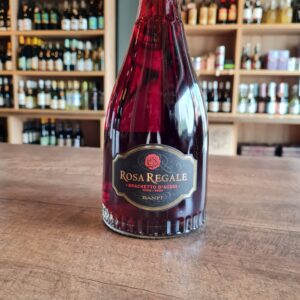 Rosa Regale is created in one of Italy's smallest production zones, the Brachetto d'Acqui DOCG. It is crafted 100% Brachetto grapes grown exclusively at the La Rosa Vineyard in the town of Acqui Terme located in the Piedmont Region of Italy. The Label features a single red rose, representing the wine's origin from this single vineyard La Rosa estate. This is a sweet, aromatic wine great for a celebration or a afternoon tea with friends. Pop open the bubbly, Enjoy!
Rosa Regale is created in one of Italy's smallest production zones, the Brachetto d'Acqui DOCG. It is crafted 100% Brachetto grapes grown exclusively at the La Rosa Vineyard in the town of Acqui Terme located in the Piedmont Region of Italy. The Label features a single red rose, representing the wine's origin from this single vineyard La Rosa estate. This is a sweet, aromatic wine great for a celebration or a afternoon tea with friends. Pop open the bubbly, Enjoy! -
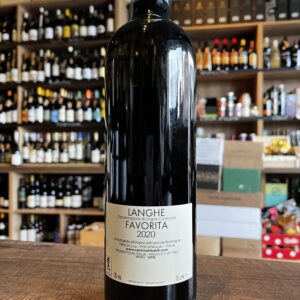
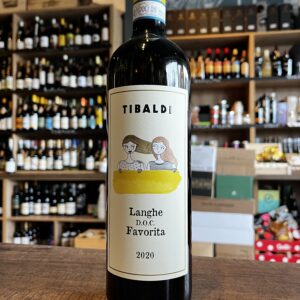 Normally I look for the inside story and drop it here. I reckon in this case its so personal that I let them tell their story... ''We are Monica and Daniela, two sisters born and raised breathing love for the winegrowing in the Roeroa colourful land, rich in biodiversity that fills us with new stimuli every day. We have inherited a passion for vines and grapes, by our father Stefano and grandfather Tunin, and so we decided to start winemaking and bet on Pocapaglia. We manage the entire wine production process: from the vineyard, where our father's help is still fundamental, to the cellar, without neglecting marketing. We both believe in commitment and tenacity, two essential ingredients to achieve the desired quality. Together we have fun, for us it is not just an occupation but it is a life choice that sees us immersed in our passion eight days a week!'' Life can be so simple and yet produce amazing and complex things... If you like Vermentino you will like this as it is its clone Pair it with someone you love
Normally I look for the inside story and drop it here. I reckon in this case its so personal that I let them tell their story... ''We are Monica and Daniela, two sisters born and raised breathing love for the winegrowing in the Roeroa colourful land, rich in biodiversity that fills us with new stimuli every day. We have inherited a passion for vines and grapes, by our father Stefano and grandfather Tunin, and so we decided to start winemaking and bet on Pocapaglia. We manage the entire wine production process: from the vineyard, where our father's help is still fundamental, to the cellar, without neglecting marketing. We both believe in commitment and tenacity, two essential ingredients to achieve the desired quality. Together we have fun, for us it is not just an occupation but it is a life choice that sees us immersed in our passion eight days a week!'' Life can be so simple and yet produce amazing and complex things... If you like Vermentino you will like this as it is its clone Pair it with someone you love -
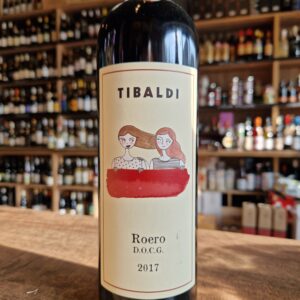 The Tibaldi family have been grape growers for several generations in the Pocapaglia area of Piemonte. In fact Nonno Tibaldi at 86 still works in the vineyard (starting with a glass from the barrel at 6am) with his son, Stefano. The Tibaldi’s have not traditionally made wine preferring to sell their crops to local producers. Stefano had 2 daughters, Monica and Daniela, and had no expectations that they would devote their lives to wine. But eldest daughter Monica studied Oenology and decided that she was going to start to make wine from the family’s wonderful fruit. Sister Daniela soon followed. And so Cantina Tibaldi was established. I simply know them as the Tibaldi Sisters. It is not unusual to see female winemakers in charge of important vineyards. Some of Australia’s finest wines are made by women and they will tell you that they are much better suited to the role as the olfactory senses are far more developed in females. What is unusual is to see the entire wine making process managed from start to finish by two women, both in their mid twenties. It can accompany any meat. Gives its best with important cheese, savory pasta and meat dishes.
The Tibaldi family have been grape growers for several generations in the Pocapaglia area of Piemonte. In fact Nonno Tibaldi at 86 still works in the vineyard (starting with a glass from the barrel at 6am) with his son, Stefano. The Tibaldi’s have not traditionally made wine preferring to sell their crops to local producers. Stefano had 2 daughters, Monica and Daniela, and had no expectations that they would devote their lives to wine. But eldest daughter Monica studied Oenology and decided that she was going to start to make wine from the family’s wonderful fruit. Sister Daniela soon followed. And so Cantina Tibaldi was established. I simply know them as the Tibaldi Sisters. It is not unusual to see female winemakers in charge of important vineyards. Some of Australia’s finest wines are made by women and they will tell you that they are much better suited to the role as the olfactory senses are far more developed in females. What is unusual is to see the entire wine making process managed from start to finish by two women, both in their mid twenties. It can accompany any meat. Gives its best with important cheese, savory pasta and meat dishes.


